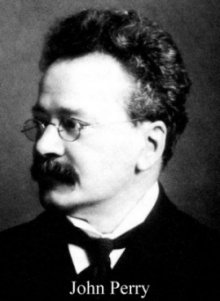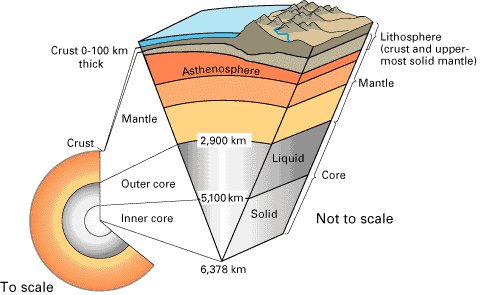John Perry and Earth's Age
Today, we see history evolving. The University of Houston's College of Engineering presents this series about the machines that make our civilization run, and the people whose ingenuity created them.
As I've written these programs over the last twenty years, the past has caught up with me. New knowledge revises even our best pictures of the past. Just as we know any honest science must be falsifiable, we know that's also true of reputable history.
When I began this program, most textbooks said modern humans were only 40,000 years old. Now we know we've existed three times that long. Earlier inventors constantly displace the hero inventors we name. Carbon dating, newly discovered artifacts and documents, and new science, all teach us to see things in new light.
Example: while 19th century geologists and theologists argued over Earth's age, Lord Kelvin used the heat conduction equation to calculate that age. He knew how rapidly Earth's temperature rises as we drill downward. Then he calculated just how long it would've taken to establish that temperature gradient between molten rock and our livable surface. He got a hundred million years. His math was hard to contest. But geologists knew that Earth was far older, and Biblical scholars claimed it was far younger. No one was happy.
Back in 1988, I said that Kelvin was wrong because radioactivity in Earth's mantle released energy. That made the gradient steeper, and it made Earth seem younger. But Kelvin didn't just use the wrong gradient. He used a completely wrong physical model. We now know that convection, not conduction, moves heat through Earth's interior. We once took Earth's solidity for granted, but it's far from solid. Think about tar: It may seem solid when we tap it with our knuckle. But, lay a coin on it and come back next month. The coin will've sunk as surely as it sinks in water.
Like hot cocoa in a thermos, Earth's molten interior moves, but far more slowly than tar. Even Earth's thick, seemingly-solid mantle, which surrounds the molten core, is fluid -- in the long term. All that convective motion inside Earth causes heat to flow a lot more rapidly than Kelvin's solid-body math suggested.
 A former Kelvin assistant, John Perry, realized something of that sort must be going on. But he hesitated to criticize Kelvin whom he respected greatly. Finally, long after Kelvin made his prediction, Perry went to him with a convection-based idea. Kelvin brushed him off. So, in 1895, Perry published his idea in Nature.
A former Kelvin assistant, John Perry, realized something of that sort must be going on. But he hesitated to criticize Kelvin whom he respected greatly. Finally, long after Kelvin made his prediction, Perry went to him with a convection-based idea. Kelvin brushed him off. So, in 1895, Perry published his idea in Nature.
He guessed the mantle was only 30 miles thick, and the molten core was well-stirred. He got an age of two or three billion years. That was close to the 4-1/2 billion years we now accept, even if his model needed a lot of refining. And what about radiation? Well, it's there all right, and it does set the surface gradient. But that gradient has no relation to Earth's age.
So we've come at last to accept the full reach and implications of our shifting fluid planet. But we must come, as well, to understand the fluid and shifting nature of history itself -- as we struggle to see the past with clear unbiased eyes.
I'm John Lienhard, at the University of Houston, where we're interested in the way inventive minds work.
P. C. England, P. Molnar, and F. M. Richter, Kelvin, Perry and the Age of the Earth. American Scientist, July-August, 2007.
E. J. Tarbuck, F. K. Lutgens, and D. Tasa, Earth: An Introduction to Physical Geology. 9th ed. (Upper Saddle River, NJ: Pearson, Prentice Hall, 2008): Chapt. 12.
I first talked about Kelvin's estimate in Episode 144. Later I revised that one as Episode 1568.
For the so-called semi-infinite region solution to the heat conduction equation (which Kelvin had to create to solve Fourier's equation knowing conditions only at Earth's surface), see see: J. H. Lienhard IV and J. H. Lienhard V, A Heat Transfer Textbook, 5th ed., Dover Pubs. Inc., Mineola, NY, 2019. You can easily download the entire book, free of charge, at https://ahtt.mit.edu/, Section 5.6.
I am most grateful to Henry Chafetz, William Dupre and Stuart Hall of the UH Geosciences Dept. for their valuable counsel. Perry image courtesy of Wikipedia, Earth Interior image courtesy of USGS.
